|
|
Creator | Title | Description | Subject | Date |
| 101 |
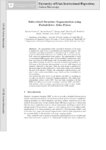 |
Gerig, Guido | Subcortical structure segmentation using probabilistic atlas priors | The segmentation of the subcortical structures of the brain is required for many forms of quantitative neuroanatomic analysis. The volumetric and shape parameters of structures such as caudate are employed to characterize a disease or its evolution. This paper presents our fully automatic segmentati... | | 2007-01-01 |
| 102 |
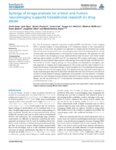 |
Gerig, Guido | Synergy of image analysis for animal and human neuroimaging supports translational research on drug abuse | The use of structural magnetic resonance imaging (sMRI) and diffusion tensor imaging (DTI) in animal models of neurophysiology is of increasing interest to the neuroscience community. In this work, we present our approach to create optimal translational studies that include both animal and human neu... | | 2011-01-01 |
| 103 |
 |
Gerig, Guido | Teasing apart the heterogeneity of autism: Same behavior, different brains in toddlers with fragile X syndrome and autism | To examine brain volumes in substructures associated with the behavioral features of children with FXS compared to children with idiopathic autism and controls. A cross-sectional study of brain substructures was conducted at the first time-point as part of an ongoing longitudinal MRI study of brain ... | | 2009-01-01 |
| 104 |
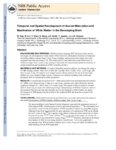 |
Gerig, Guido | Temporal and spatial development of axonal maturation and myelination of white matter in the developing brain | BACKGROUND AND PURPOSE-Diffusion tensor imaging (DTI) has been widely used to investigate the development of white matter (WM). However, information about this development in healthy children younger than 2 years of age is lacking, and most previous studies have only measured fractional anisotropy (... | | 2009-01-01 |
| 105 |
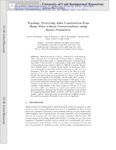 |
Gerig, Guido | Topology preserving atlas construction from shape data without correspondence using sparse parameters | Statistical analysis of shapes, performed by constructing an atlas composed of an average model of shapes within a population and associated deformation maps, is a fundamental aspect of medical imaging studies. Usual methods for constructing a shape atlas require point correspondences across subject... | | 2012-01-01 |
| 106 |
 |
Gerig, Guido | Toward a comprehensive framework for the spatiotemporal statistical analysis of longitudinal shape data | This paper proposes an original approach for the statistical analysis of longitudinal shape data. The proposed method allows the characterization of typical growth patterns and subject-specific shape changes in repeated time-series observations of several subjects. This can be seen as the extension ... | | 2013-01-01 |
| 107 |
 |
Gerig, Guido | Towards analysis of growth trajectory through multi-modal longitudinal MR imaging | The human brain undergoes significant changes in the first few years after birth, but knowledge about this critical period of development is quite limited. Previous neuroimaging studies have been mostly focused on morphometric measures such as volume and shape, although tissue property measures rela... | | 2010-01-01 |
| 108 |
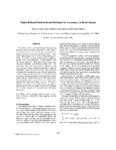 |
Gerig, Guido | Tumor-induced structural radiometric asymmetry in brain images | This paper presents a general framework for analyzing structural and radiometric asymmetry in brain images. In a healthy brain, the left and right hemispheres are largely symmetric across the mid-sagittal plane. Brain tumors may belong to one or both of the following categories: mass-effect, in whic... | | 2001-01-01 |
| 109 |
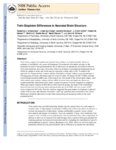 |
Gerig, Guido | Twin-singleton differences in neonatal brain structure | Twin studies suggest that global and regional brain volumes are highly heritable. However, estimates of heritability vary across development. Given that all twin studies are open to the potential criticism of non-generalizability due to differences in intrauterine environment between twins and singl... | | 2011-01-01 |
| 110 |
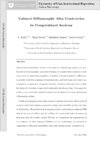 |
Gerig, Guido | Unbiased diffeomorphic atlas construction for computational anatomy | Construction of population atlases is a key issue in medical image analysis, and particularly in brain mapping. Large sets of images are mapped into a common coordinate system to study intra-population variability and inter-population differences, to provide voxel-wise mapping of functional sites, a... | | 2004-01-01 |
| 111 |
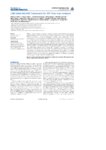 |
Gerig, Guido | UNC-Utah NA-MIC framework for DTI fiber tract analysis | Diffusion tensor imaging has become an important modality in field of neuroimaging to capture changes in micro-organization and to assess white matter integrity or development While there exists a number of tractography toolsets, these usually lack tools for preprocessing or to analyze diffusion pro... | | 2014-01-01 |
| 112 |
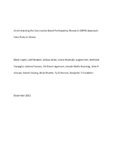 |
Taylor, Mark | Understanding the community based participatory research (CBPR) approach: case study in Ghana | In 2003, the University of Utah, in cooperation with Kwame Nkrumah University of Science and Technology (KNUST), Komfo Anokye Teaching Hospital (KATH), the Atwima Nwabiagya District Assembly and Barekuma community leaders, formed what is known as the Barekuma Collaborative Community Development Proj... | | 2011-12-01 |
| 113 |
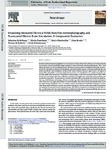 |
Dannhauer, Moritz | Visualizing simulated electrical fields from electroencephalography and transcranial electric brain stimulation: a comparative evaluation | Electrical activity of neuronal populations is a crucial aspect of brain activity. This activity is not measured directly but recorded as electrical potential changes using head surface electrodes (electroencephalogram - EEG). Head surface electrodes can also be deployed to inject electrical current... | | 2014-01-01 |
| 114 |
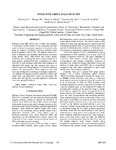 |
Gerig, Guido | Voxel-wise group analysis of DTI | Diffusion tensor MRI (DTI) is now a widely used modality to investigate the fiber tissues in vivo, especially the white matter in brain. An automatic pipeline is described in this paper to conduct a localized voxel-wise multiple-subject group comparison study of DTI. The pipeline consists of 3 steps... | | 2009-01-01 |
| 115 |
 |
Gerig, Guido | White matter microstructure and atypical visual orienting in 7 month-olds at risk for autism | Objective: The authors sought to determine whether specific patterns of oculo-motor functioning and visual orientingcharacterize 7-month-old infants who later meet criteria for an autism spectrum disorder (ASD) and to identify the neural correlates of these behaviors. Method:Data were collected from... | | 2013-01-01 |















